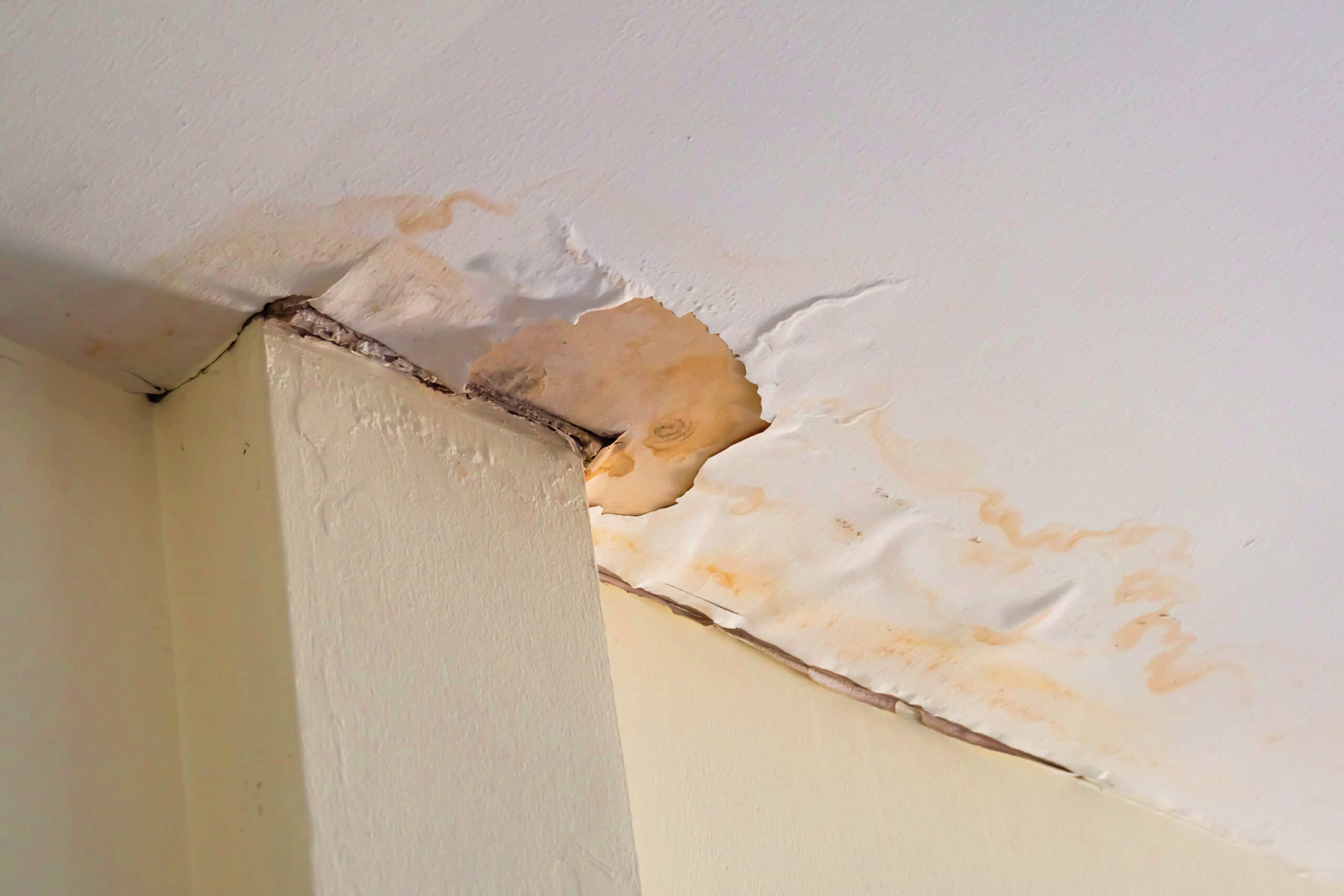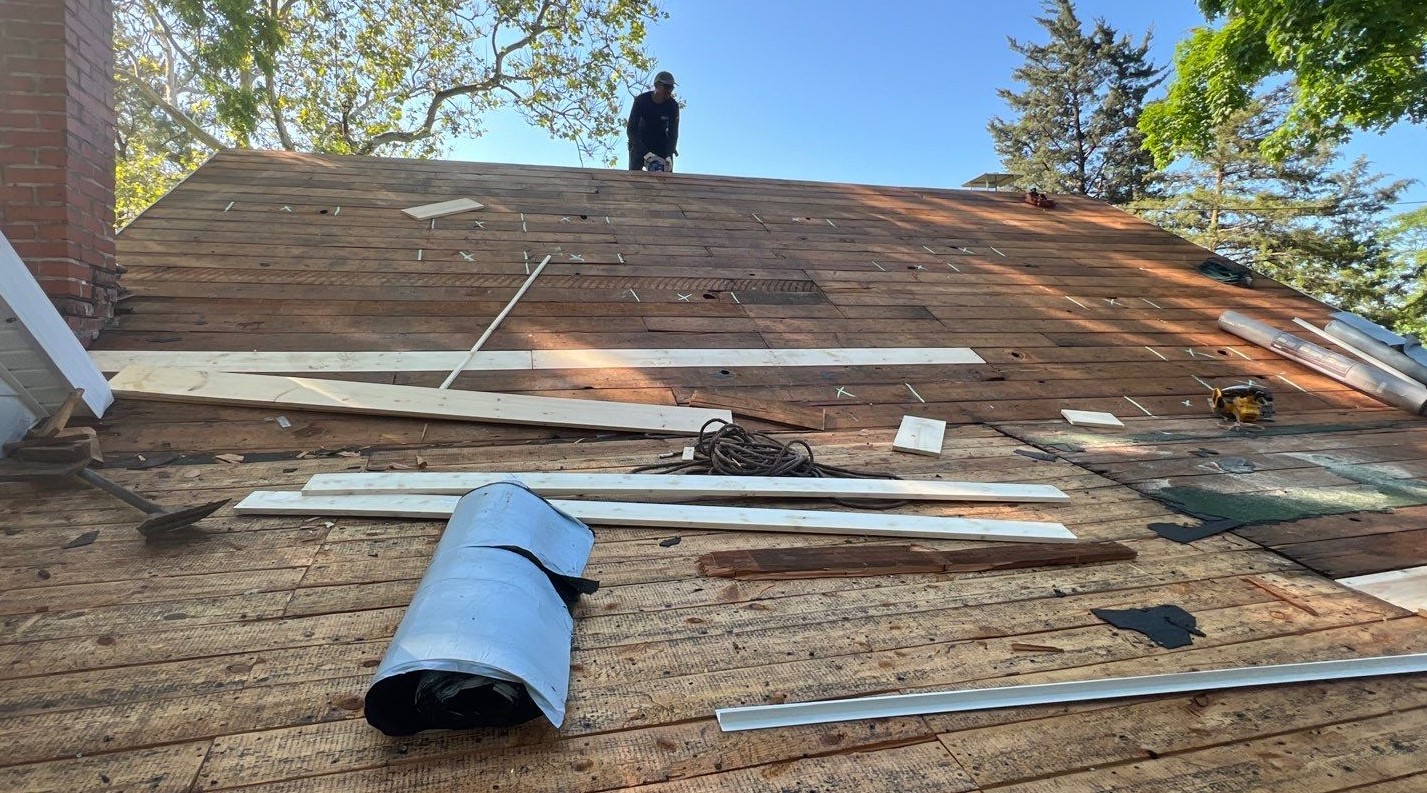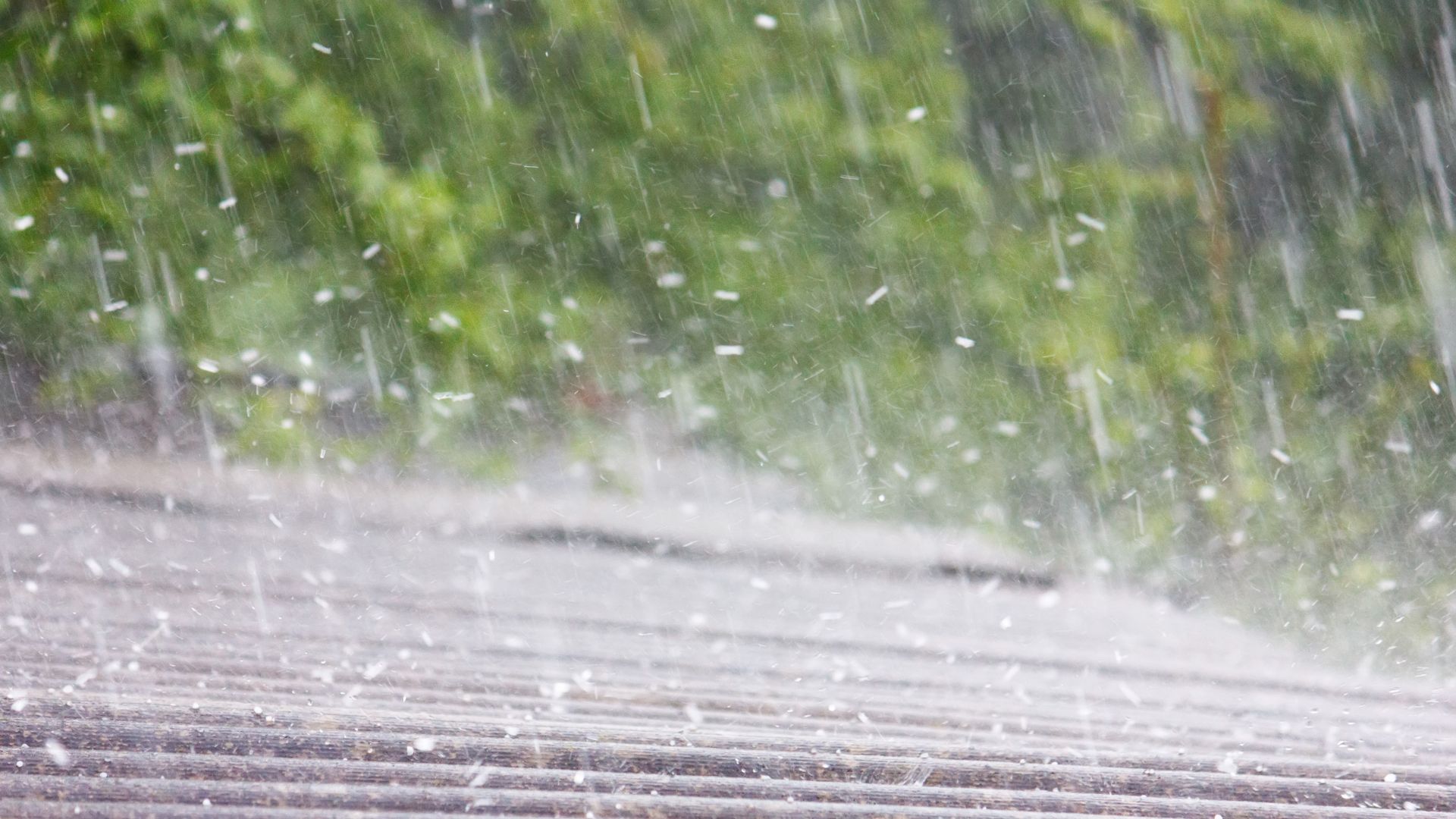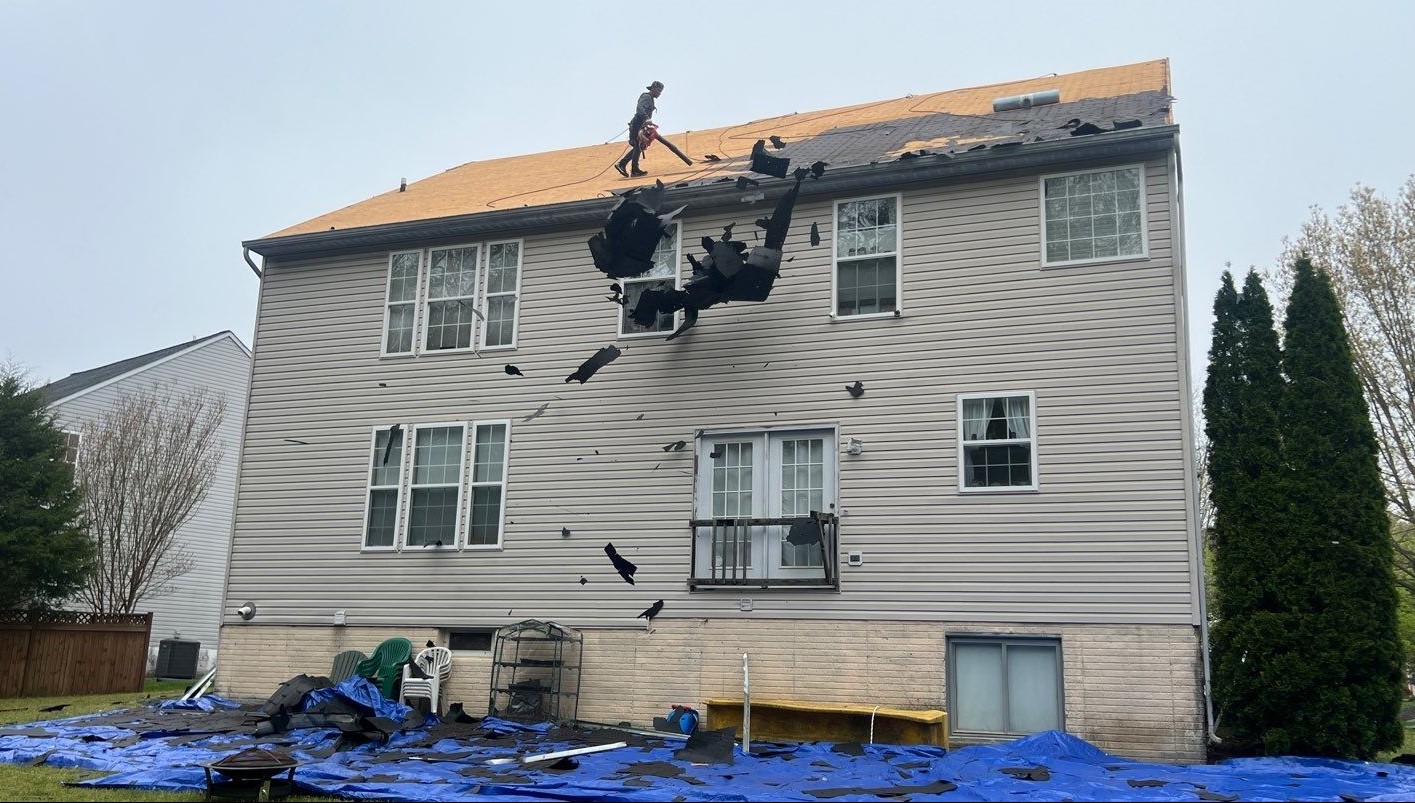When severe storms hit, they can wreak havoc on our roofs. Storm damage roof repair is a procedure we take to fix our homes after a storm has passed through. Acting quickly is crucial because it stops further destruction and saves money in the long run.
As we inspect our property for harm and capture the extent of the damage, we set ourselves up for success with insurance claims and future protection strategies.
The damages from water, wind, or falling trees during a storm vary greatly in severity. We must promptly cover any exposed sections of the roof to prevent more water from getting inside while also reaching out to professional services that specialize in emergency repairs.
From removing standing water to fixing broken shingles, these experts handle all sorts of troubles caused by Mother Nature’s fury.
Roof maintenance isn’t just about patching up after disasters—it’s also about preventing them before they even start. Good habits like tree trimming and gutter clearing are your best defense against future storms trying to break down your home piece by piece.
A reliable roofing contractor becomes your ally in both setting things right when disaster strikes and keeping your defenses strong against any upcoming weather challenges. They understand how important a solid roof over your head is for safety and comfort.
Let us guide you step-by-step through quick response strategies after storm damage has occurred – ensuring peace of mind no matter what comes your way!
Key Takeaways
- After storm damage, inspect your property for roof issues like missing shingles or leaks and cover exposed areas with tarps to prevent further damage.
- Document all roof damage carefully with photos and detailed notes to aid in filing insurance claims and receiving proper reimbursement.
- Contact a professional roofing contractor promptly for an assessment and repair of the storm damage to ensure safety and integrity of your home.
- Regular maintenance, such as cleaning gutters and trimming tree branches near the roof, can help prevent future storm-related damages.
- When choosing a roofing contractor, look for ones with experience, proper certifications, and positive feedback from previous clients.
Defining a Roof Repair Emergency
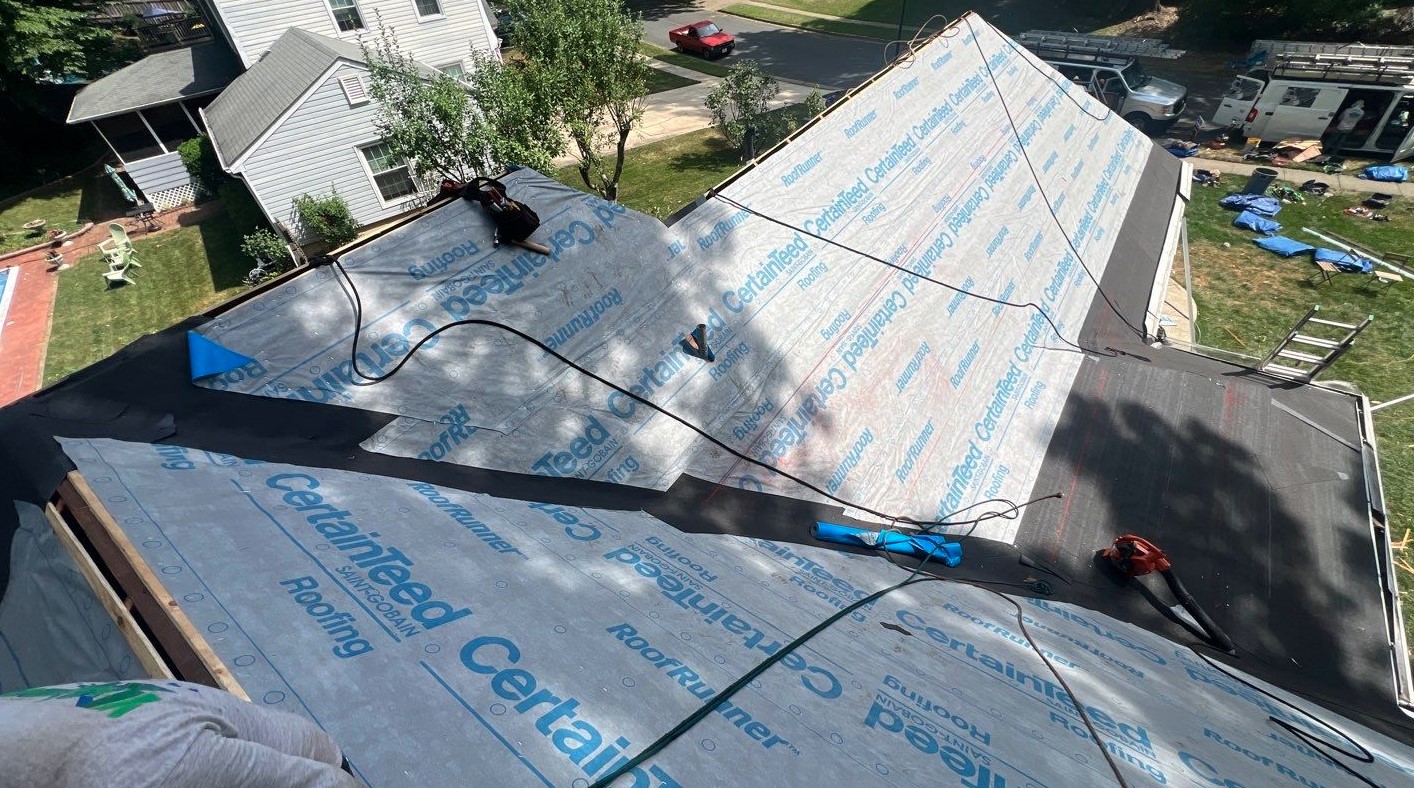
Moving from understanding why emergency roof repair is vital, let’s clearly define what makes a situation an urgent roof repair scenario. A roof repair becomes an emergency when damage compromises the structural integrity of your home or business, posing immediate risks to safety and property.
This could mean missing shingles that expose the interior to water damage, a puncture due to fallen tree limbs after a storm or significant leaks developing rapidly. These problems can escalate if not addressed promptly, potentially leading to mold growth, health hazards for those with allergies or asthma, and further deterioration of building structures.
We recognize these situations demand fast action – securing exposed areas swiftly is crucial to prevent additional damages like electrical issues or pest infestations. Emergency repairs focus on quickly restoring protection by sealing leaks and covering damaged sections until a full assessment and permanent fix can happen.
Our goal is always ensuring the safety of residents while preserving the longevity of their property investments through expert intervention during critical moments such as these.
Types of Emergency Roof Damage
Water damage, storm damage, wind damage, and damage from neglect are all common types of emergency roof situations that require immediate attention. Tree damage also poses a significant risk to the structural integrity of a roof and should be addressed promptly.
Water Damage
We know the havoc water damage can wreak on a building’s structure. Whether from roof leaks during a storm or burst pipes, it’s crucial to leap into action immediately. Standing water must be removed swiftly, and all materials affected by moisture require prompt repair or replacement to prevent long-term issues like mold growth.
Our team understands how overwhelming it can feel when you’re faced with saturated walls, soaked insulation, and the potential for mold spores that could cause allergic reactions or respiratory conditions if not treated properly.
We prioritize cleaning and disinfecting your space thoroughly to eliminate health risks associated with water intrusion. Homeowners insurance often covers these unexpected incidents which is why documenting any damage carefully is key for insurance claims.
Responding quickly limits further damage and restores your property efficiently. Professional roofers have the expertise needed for proper inspection and repairs while ensuring everything meets safety regulations.
Count on us to recommend solutions designed specifically for your home or commercial building after an event of water ingress – we stand ready to assist in protecting your investment against future emergencies with reliable strategies tailored just for you.
Storm Damage
Storm damage can unleash chaos on our roofs, tearing through shingles and leaving leaks that threaten the integrity of our homes. Hail storms particularly wreak havoc, pummeling roofing materials with enough force to warrant immediate repairs.
The aftermath of blizzards and heavy snowfall also poses severe problems, as the weight of the accumulation can compromise structural components.
We must act swiftly to mitigate this damage. Our first step is a thorough property inspection to assess the extent of harm done by these unforgiving weather conditions. Documenting all signs of distress helps in filing accurate claims with insurance companies.
Exposed areas need prompt covering; durable tarps often serve as an effective temporary defense against further interior and exterior deterioration. Securing a reputable roofing contractor becomes crucial for assessing roof replacement or repair needs without delay—before small issues spiral into more significant complications, like fungal infections or compromised immune systems due to molds in our attics.
Wind Damage
Strong winds from natural disasters like hurricanes and tropical storms can cause significant damage to roofs, leading to safety hazards and financial loss. Insurance generally covers wind damage as one of the most common storm-related issues.
It’s crucial for homeowners and property managers to promptly address any wind-caused roof damage, as neglecting it could exacerbate the problem and lead to further complications. Regular inspections post-storms would help in identifying any potential damages that need immediate attention.
Inspecting properties after a storm is essential; this should be facilitated by professionals who can thoroughly assess the extent of the damage. Documenting these damages with detailed evidence is vital when contacting insurance companies for claims processing purposes.
In cases where exposed areas are identified due to wind-damaged roofs, swift action must be taken to cover them up temporarily while awaiting permanent repairs or replacements.
Damage from Neglect
Damage from neglect poses a significant risk to the integrity of your roof. Visible signs of neglect can include missing or damaged shingles, deteriorated flashing, and clogged gutters.
Over time, these issues can lead to water leaks, mold growth, and structural damage. Regular inspections and maintenance are crucial for identifying and addressing neglected areas before they escalate into major problems.
Roof neglect can result in costly repairs that could have been prevented with timely intervention. It is essential to address any signs of neglect promptly by scheduling regular roof inspections and ensuring that any necessary maintenance or repairs are completed in a timely manner.
Tree Damage
Trees can wreak havoc on roofs in a variety of ways. Overhanging branches pose a threat to the integrity of your roof, while fallen leaves can clog gutters and lead to water damage.
Moss growing on the shingles provides an avenue for moisture retention, which accelerates wear and tear. One of the most severe forms of tree-related roof damage occurs when trees fall onto the structure due to storms or other natural disasters.
However, it’s essential to be proactive in preventing such damages by routinely trimming overhanging branches and removing any potential hazards around your property. Additionally, regularly inspecting your roof for signs of moss growth or debris accumulation will help mitigate potential risks before they escalate into larger issues.
Quick Response Strategies for Storm Damage Roof Repair
When faced with storm damage to your roof, it’s crucial to act quickly and efficiently. After inspecting the property and documenting the damage, covering exposed areas and contacting your insurance company are key steps in safeguarding your property.
Finally, calling a professional roofing specialist will ensure that the necessary repairs are completed promptly and effectively.
Inspect Property and Assess Damage
After a storm, assessing the property and determining the extent of damage is crucial. Here are the steps to inspect your property for storm damage:
- Start by examining the exterior of your property for any visible signs of damage, such as missing or damaged shingles, dents, or cracks in the roofing.
- Look for signs of water intrusion inside the property, such as water stains on ceilings or walls, which could indicate roof leaks.
- Document all observed damage with photographs and notes to provide a clear picture of the situation to your insurance company and roofing professional.
- Assess the entire roof for structural damage or any compromised areas that could pose a safety risk.
- Carefully examine gutters and downspouts for debris blockages or damages caused by severe weather.
- Check around your property for fallen tree branches, debris, or other objects that may have caused damage to the roof.
- Utilize binoculars to inspect hard-to-reach areas of your roof from ground level and look for any obvious signs of damage.
- Consider seeking assistance from a professional roofing contractor if you are unsure about identifying potential storm-related damage on your own.
Document the Damage
After inspecting and assessing the storm damage to your roof, the next crucial step is to thoroughly document the extent of the damage. This documentation is essential for filing insurance claims and obtaining reimbursement from FEMA. Here are the steps to effectively document the damage:
- Take Clear Photographs: Use a camera or smartphone to capture detailed images of all damaged areas, including close-ups of any visible cracks, dents, or missing shingles.
- Video Evidence: Record a comprehensive video walkthrough of the damaged areas, ensuring that you cover all angles and provide context for the extent of the damage.
- Written Descriptions: Provide written descriptions alongside your visual evidence, detailing specific areas of impact and noting any visible water leaks or structural weaknesses.
- Keep Receipts and Invoices: Save all receipts and invoices related to temporary repairs, tarping services, or emergency mitigation efforts as part of your documentation.
- Create an Inventory: Make a detailed inventory list of any personal property or belongings that were damaged as a result of the storm’s impact on your roof.
- Submit Timely Reports: Promptly submit all collected documentation to your insurance company and FEMA to support your claims for reimbursement and expedite the repair process.
Cover Exposed Areas
After a storm, it’s crucial to cover any exposed areas on your roof to prevent further damage. Here are the steps to effectively cover exposed areas:
- Inspect the extent of the damage to determine the areas that need covering.
- Use tarps or similar materials to securely cover the damaged sections, preventing water from entering the property.
- Ensure that the covering is fastened tightly and securely to withstand potential wind and rain.
- Monitor the covered areas regularly to confirm that they remain intact and provide adequate protection.
- Schedule professional roof repair as soon as possible to address and rectify the damage permanently.
Contact Insurance Company
Contact the insurance company immediately to initiate the claims process. When contacting the insurance company, be prepared to provide a detailed description of the damages and any documentation available. Here are the steps to take when contacting the insurance company:
- Provide your policy number and personal information.
- Describe the extent of the damage and provide any relevant documentation, such as photographs or videos.
- Schedule an inspection with the insurance adjuster at a convenient time for both parties.
- Keep records of all communication, including dates, times, and names of representatives spoken to.
Call a Professional
When dealing with storm damage to your roof, it is essential to call a professional. Here are the critical steps to take:
- Schedule a Prompt Inspection: Contact a reputable roofing contractor as soon as possible to schedule an inspection of the damage.
- Obtain Expert Evaluation: A professional assessment ensures accurate identification of the extent of the storm damage and necessary repairs.
- Discuss Repair Options: Engage in a detailed discussion with the roofing professional about the repair options available, including materials and estimated timelines.
- Ensure Compliance: Confirm that the chosen professional adheres to local regulations and building codes for safe and compliant repairs.
- Request Detailed Estimate: Ask for a comprehensive written estimate that includes all anticipated costs, allowing for informed decision-making.
- Verify Insurance Coverage: Work closely with your insurance provider and the roofing professional to ensure that all eligible storm damage repairs are covered.
- Schedule Timely Repairs: Once you have selected a professional, schedule prompt repairs to prevent further deterioration of your roof’s condition.
Investigating Water Spots on the Ceiling: Common Causes and Fixes
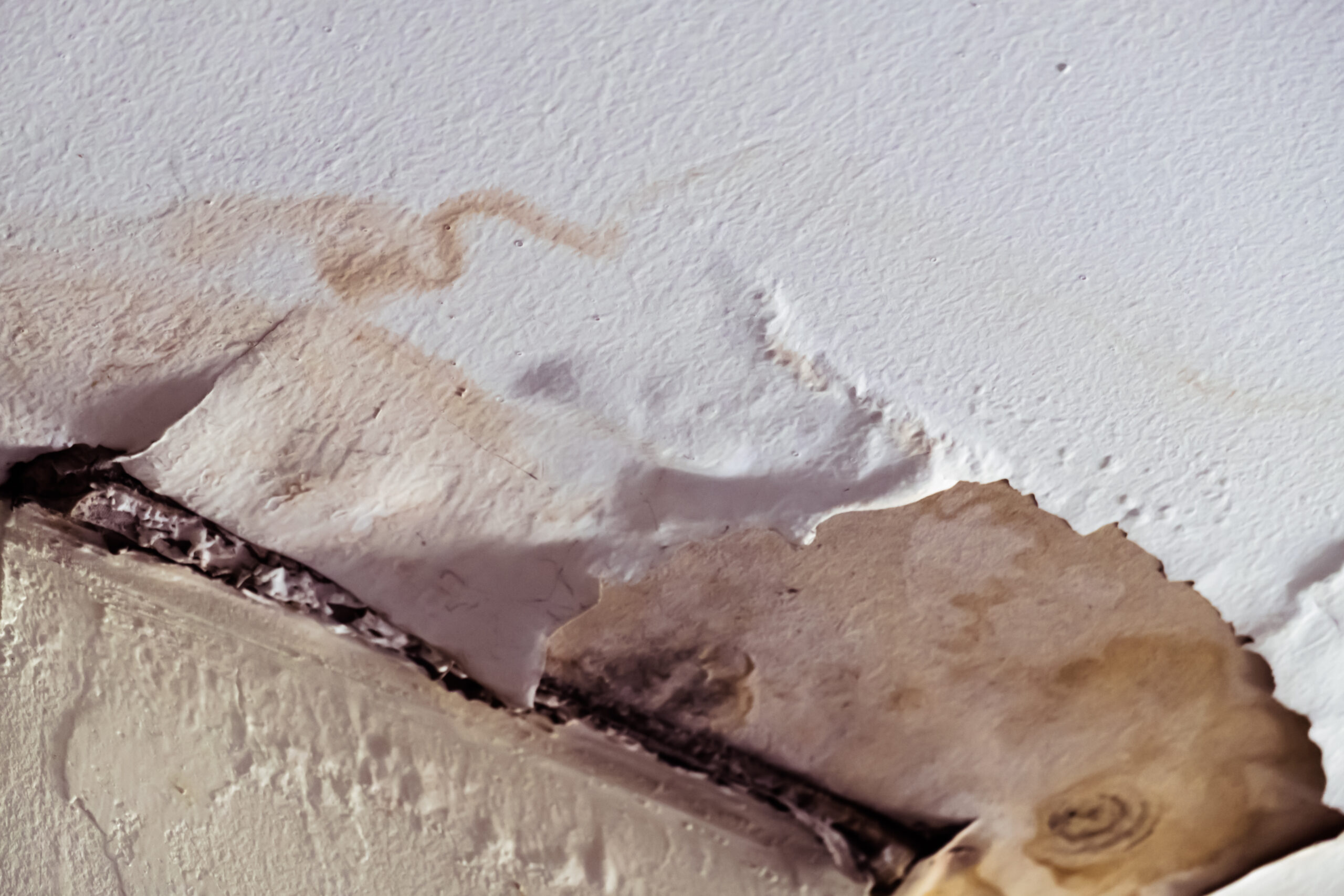
Water damaged ceiling roof, brown stain, office building
Water spots on the ceiling can signal various issues, including a leaking roof, damaged waterproofing, or ventilation system problems. Common causes of these water stains may involve aging roofs with cracks and deteriorating chimney flashing.
Signs of ceiling water damage include discolored spots, peeling or cracking wall surfaces, growths with discoloration, and mold odors. Urgent attention should be given to brown spots on the ceiling as they often indicate water damage.
Faulty roof vents and flashing are prevalent culprits for roof leaks leading to unsightly stains on the ceiling. Once water spots are detected, prompt investigation is crucial to identify the underlying source of the leak and prevent further structural damage.
Taking proactive steps to address potential causes is imperative when dealing with water spots on the ceiling caused by roofing issues.
Tips for Preventing Future Roof Damage
Regular roof maintenance is crucial for preventing future damage, including inspecting for any loose or damaged shingles, ensuring proper drainage and gutter systems, and removing debris.
To learn more about how to keep your roof in tip-top shape, read our full blog post!
Regular Roof Maintenance
Regular roof maintenance is essential to avoid storm damage and extend the lifespan of your roof. Here are important strategies to consider:
- Schedule regular inspections to identify any signs of wear and tear, leaks, or potential issues.
- Promptly address minor repairs and perform preventative measures to prevent small problems from escalating into major damage.
- Keep gutters and downspouts clean to ensure proper drainage and prevent water buildup that can lead to damage.
- Clear any debris such as leaves, branches, or other materials that can accumulate on the roof and cause damage during storms.
- Consider professional roof cleaning to remove moss, algae, and other materials that can degrade the roof’s integrity over time.
- Maintain trees surrounding the property by trimming branches that could potentially fall onto the roof during severe weather conditions.
Proper Tree Management
Proper tree management is crucial for preventing roof damage caused by overhanging branches and falling limbs. Regularly trimming and pruning trees can significantly minimize the risk of future roof damage during storms. Here are the steps to ensure proper tree management:
- Schedule regular inspections with an arborist to assess the health and stability of trees on your property.
- Trim back overhanging branches that pose a threat to your roof, especially those close to the structure.
- Prune trees to remove dead or weak branches that could potentially fall onto the roof during high winds or storms.
- Consider removing trees that are in poor health, unstable, or located too close to the property, posing a significant risk of causing damage.
How to Choose a Reliable Roofing Contractor
When choosing a reliable roofing contractor, it is important to request a visual inspection of the roof through video. This can help in understanding the extent of damage and necessary repairs.
It’s also crucial to hire experienced roofers who have a track record of successfully completing roofing projects. Check for qualifications and certifications, ensuring that the contractor meets industry standards and safety regulations.
Additionally, seek feedback from previous clients to learn about their experiences with the company. Opting for a local roof repair company enables convenient access for ongoing communication and support throughout the project.
After conducting an in-depth roof inspection, it’s essential to entrust your roofing repairs to a reputable contractor that has proven experience in handling similar projects. This ensures that your property receives quality workmanship and excellent service.
Conclusion
When dealing with storm damage on a roof, immediate action is crucial. Assess the extent of the damage and document it for insurance purposes. Contact a professional roofing contractor to address the repairs promptly.
Cover any exposed areas to prevent further damage until permanent repairs can be made. Take quick response strategies seriously to minimize potential long-term issues with your roof.
If you’re noticing water spots on your ceiling and are unsure what to do, check out our detailed guide on common causes and fixes for water spots to help address the issue.
FAQs
1. What should I do first if my roof is damaged by a storm?
After a storm, check your roof for hail damage or other issues caused by severe weather. If you find damage, call a reliable home inspector right away to assess and proceed with repairs.
2. Can waiting to fix storm damage lead to more problems?
Yes, delaying repairs can let pests like rodents inside your attic and also lead to water leaks that may cause respiratory symptoms such as coughing or difficulty breathing from mold growth.
3. How often should I perform regular maintenance on my roof?
Schedule regular maintenance at least once a year to prevent irritation from issues like shakes in asphalt shingles which could be costly if neglected.
4. Are there specific quick response strategies for areas prone to tornadoes like South Texas?
In tornado-prone areas such as South Texas, design-build solutions are key; they provide rapid repair services after storms ensuring reliability and helping reduce future utility bills due to proper insulation.
5. Who should I contact for trustworthy storm damage roof repair services?
For trusted service providers, look for contractors affiliated with the Better Business Bureau (BBB) who are known for their reliability in handling fire damages and other urgent repair needs efficiently.


